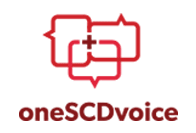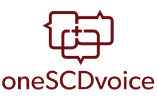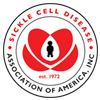Trusted Resources: Evidence & Education
Scientific literature and patient education texts
Gene Therapy in a Patient with Sickle Cell Disease
source: The New England Journal of Medicine
year: 2017
authors: Ribeil JA, Hacein-Bey-Abina S, Payen E, Magnani A, Semeraro M, Magrin E, Caccavelli L, Neven B, Bourget P, El Nemer W, Bartolucci P, Weber L, Puy H, Meritet JF, Grevent D, Beuzard Y, Chrétien S, Lefebvre T, Ross RW, Negre O1, Veres G, Sandler L, Soni S, de Montalembert M, Blanche S, Leboulch P, Cavazzana M
summary/abstract:Sickle cell disease results from a homozygous missense mutation in the β-globin gene that causes polymerization of hemoglobin S. Gene therapy for patients with this disorder is complicated by the complex cellular abnormalities and challenges in achieving effective, persistent inhibition of polymerization of hemoglobin S. We describe our first patient treated with lentiviral vector-mediated addition of an antisickling β-globin gene into autologous hematopoietic stem cells. Adverse events were consistent with busulfan conditioning. Fifteen months after treatment, the level of therapeutic antisickling β-globin remained high (approximately 50% of β-like-globin chains) without recurrence of sickle crises and with correction of the biologic hallmarks of the disease.
DOI: 10.1056/NEJMoa1609677read more full text
Related Content
-
Addressing challenges of clinical trials in acute pain: The Pain Management of Vaso-occlusive Crisis in Children and...BACKGROUND/AIMS: Neuropathic pain is a k...
-
Disability evaluation under social security (hematological disorders – childhood)A. What hematological disorders do we ev...
-
First World Cord Blood Day on Nov. 15 to Highlight Cord Blood Uses, Stem Cell ResearchThe inaugural World Cord Blood Day on No...
-
Keith Quirolo, MDDr. Keith Quirolo is a pediatrician in O...
-
A Patient Advocate’s Take on Sickle Cell Disease: The Pain and the PromiseSeptember is National Sickle Cell Awaren...
-
Vanderbilt University Medical CenterThe Vanderbilt-Meharry-Matthew Walker Ce...
-
Tiffany Bell, MSWTiffany Bell completed her MSW in 2015 f...
To improve your experience on this site, we use cookies. This includes cookies essential for the basic functioning of our website, cookies for analytics purposes, and cookies enabling us to personalize site content. By clicking on 'Accept' or any content on this site, you agree that cookies can be placed. You may adjust your browser's cookie settings to suit your preferences. More Information
The cookie settings on this website are set to "allow cookies" to give you the best browsing experience possible. If you continue to use this website without changing your cookie settings or you click "Accept" below then you are consenting to this.




 +myBinder
+myBinder
